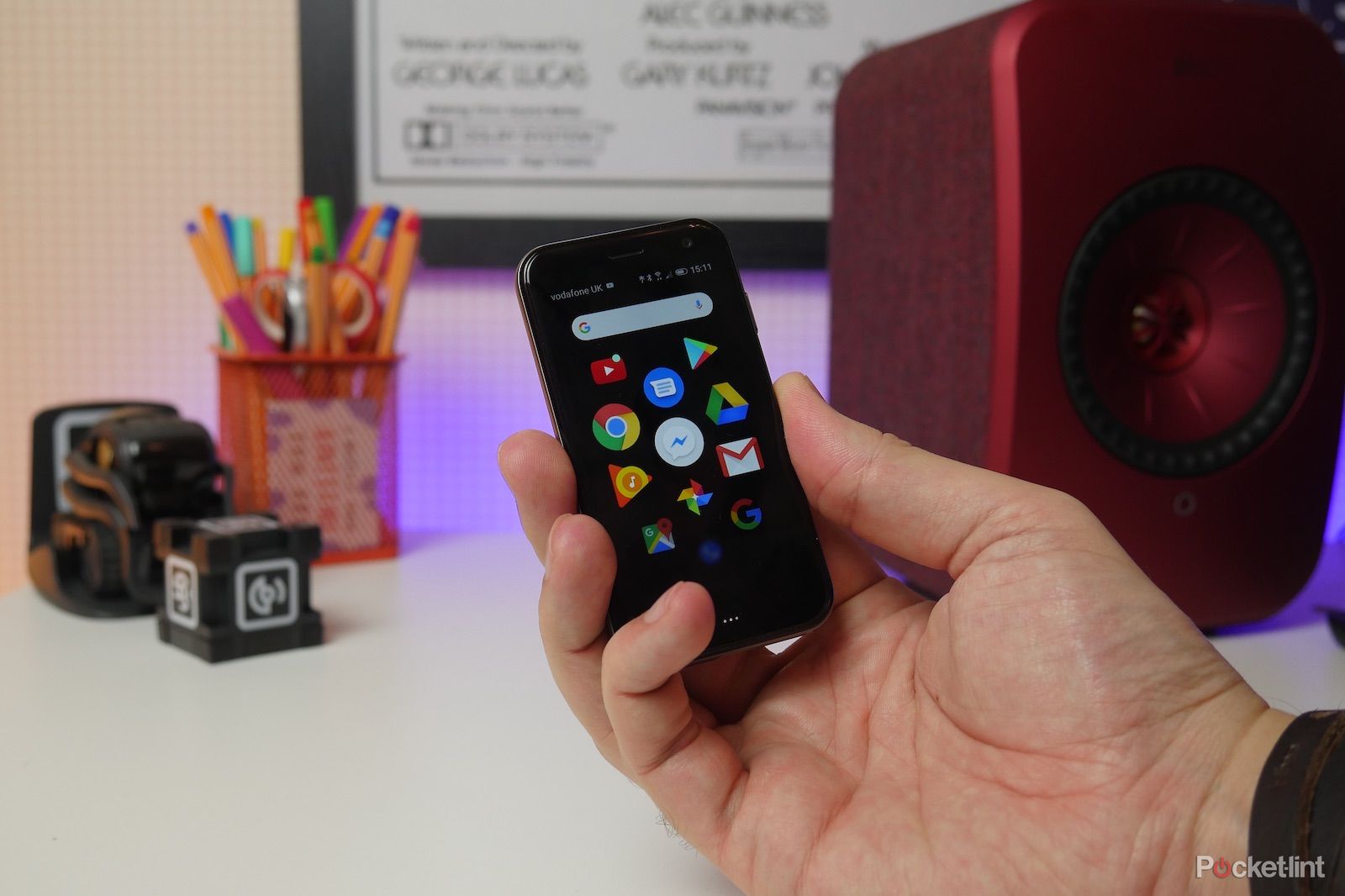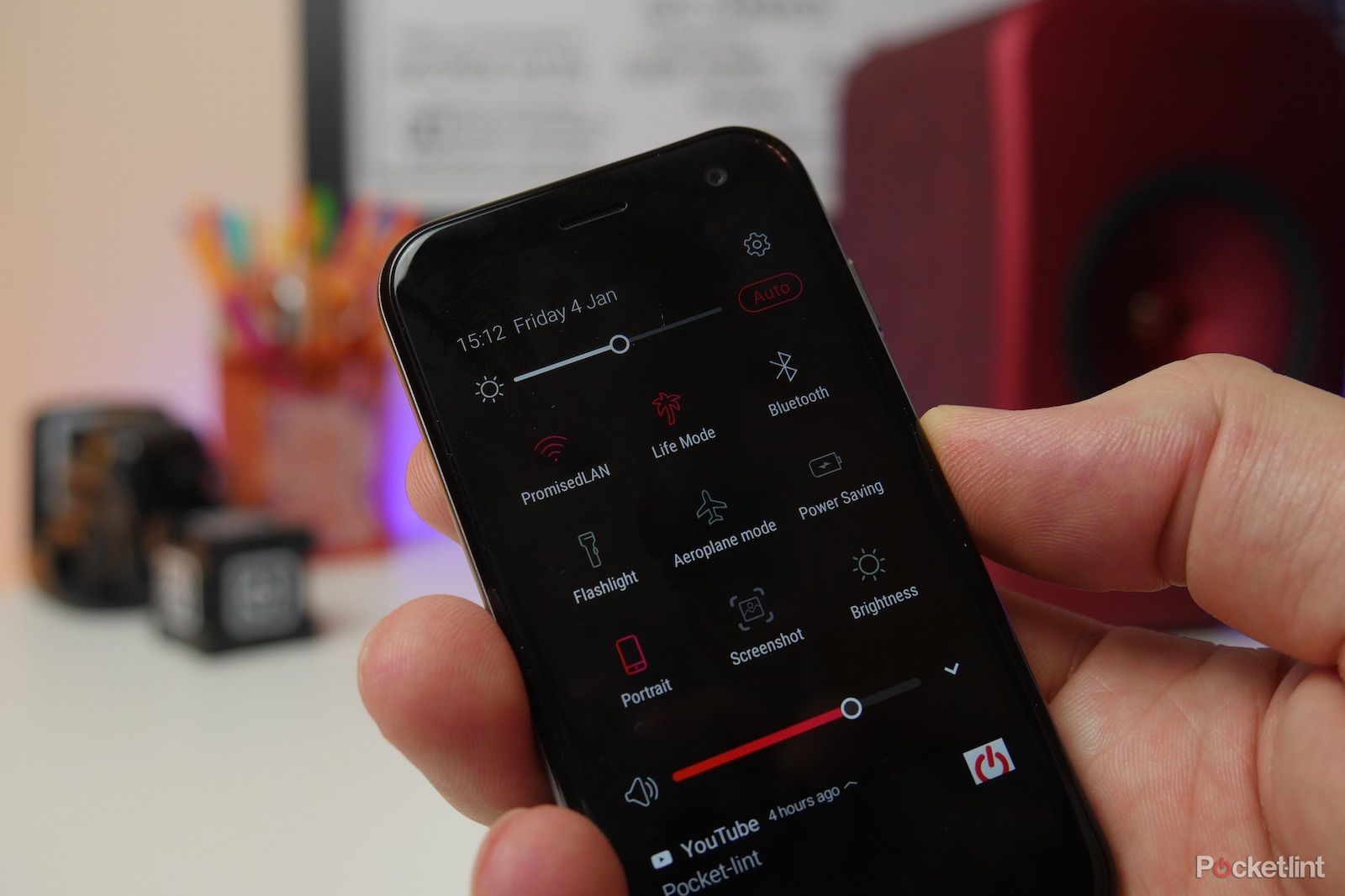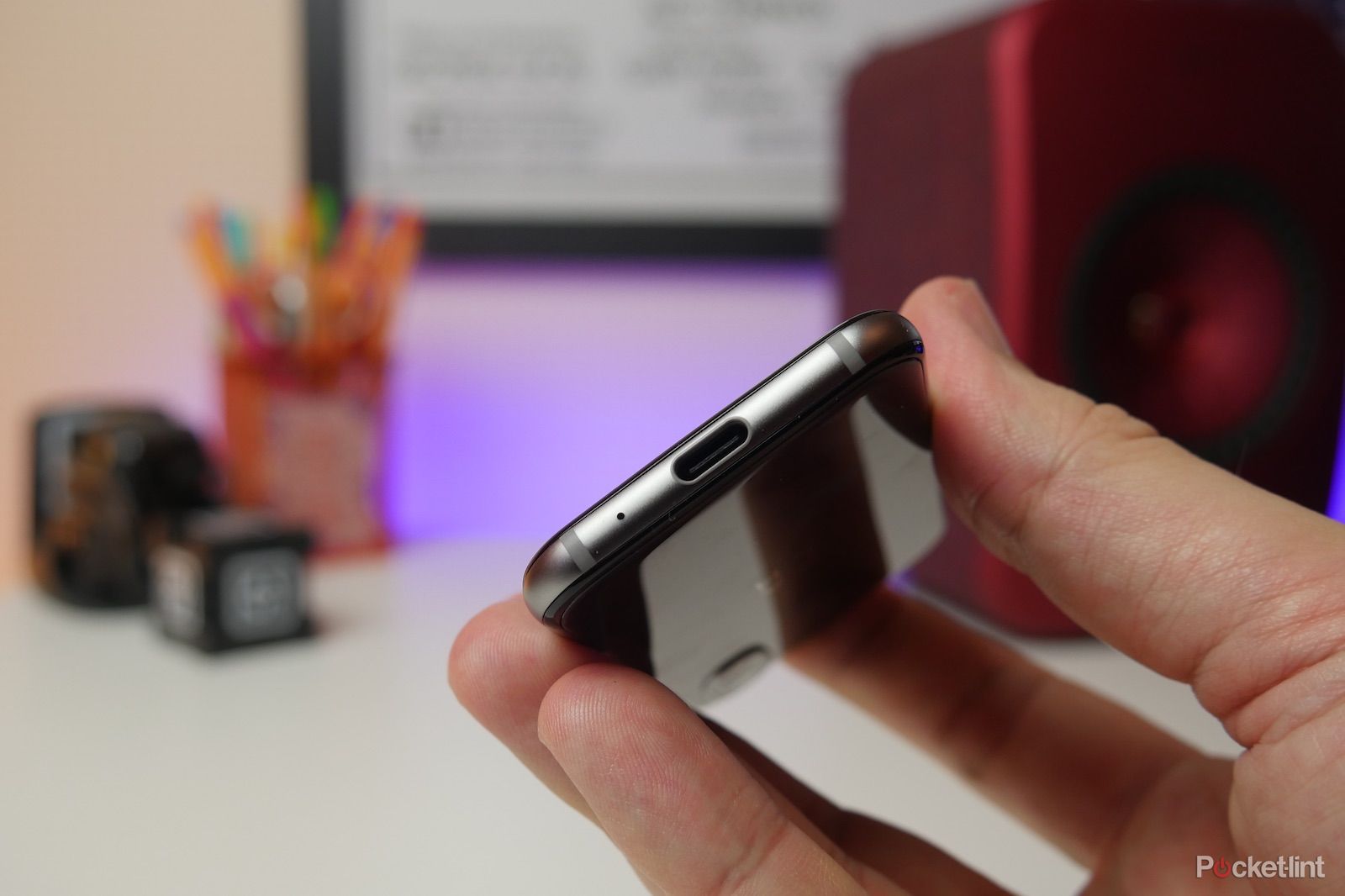When TCL acquired the rights to start selling Palm-branded products, all of us nostalgic folk dreamt of a reboot of the old Palm Pre series, or even a modern interpretation of the Treo Pocket PC. After all, Palm's name was synonymous with productivity, delivering gadgets that rivalled BlackBerry, with powerful software, useful features and physical keyboards.
Notice the use of past tense there? Unlike how TCL rebooted the BlackBerry brand, the Palm phone for 2019 is about as far from the powerful and productive tools of old as could be.
Which is perhaps half the point. The Palm phone is designed to, well, keep you from using it for every possible action. After all, we're all more-or-less addicted to our smartphones, spending far too many hours a day using them. So this new, tiny Palm is here to keep things to the basics and just your daily necessities at your fingertips. Is it a little stroke a genius or just a massive blunder?
Our quick take
With a price of nearly £350, it's hard to see where the true value is in the new Palm smartphone. Yes, it's cute, it's eye-catching. But if you want a companion for your big smartphone then a smartwatch would be a better (and smaller still) purchase at a similar price. If you're after a smartphone with all the functions at a low price, there are cheaper and far more capable options.
With that said, this tiny Palm is quite a useful little portable media player. And for those who use Strava or other apps to track exercise sessions, it's a great little device to carry in short pockets. Not that either of these points is reason enough to buy one.
If you're looking at buying a spare phone with the sole purpose of keeping you from your attention-grabbing smartphone, you might be better off with the £26 Nokia 3310. Or if you already have a smartphone and want to detox from tech and notifications for a bit, just pop your phone on Airplane mode, delete Facebook and enjoy not having spent any extra money.
Still, there's no denying this Palm phone is very cute. We love that it exists, even though we'd never buy one.

Palm phone - 3.0 / 5
| FOR | AGAINST |
|---|---|
|
|
Design
- Measures 96.5 x 50.5 x 10mm
- Gorilla Glass 3 front and back
- IP68 water/dust resistant
- Aluminium frame
The Palm looks rather like a miniature iPhone. It has similar rounded corners and edges, with an all-glass front and all-glass back. It even has the vertical pill-shaped camera protrusion on the back (although it only contains a single camera and single LED flash).
Perhaps the only unusual part of the Palm's design is the lack of features and buttons. Look around the edges and you'll only find a single Type-C port, the SIM tray and a single power/sleep button. There are no physical volume buttons, which means resorting to software-based controls for adjusting the volume and taking a screenshot.
You may have noticed we didn't mention a speaker grille as well. That's for good reason: it doesn't have one. The loudspeaker and the earpiece are one and the same, placed in the top bezel above the screen. And just in case you were holding out hope of using your favourite wired earphones then, sorry, there's no 3.5mm headphone jack either.
But how small is the Palm phone, exactly? Well, Zoolander would have a field day. It's just over 96mm tall and 50mm wide. In real terms that means it's slightly longer and slightly narrower than a credit card. Or, less than two thirds the height of a Galaxy Note 9. It's small enough to put in your pocket and not realise it's there. Indeed, it's literally palm-sized.
It's easy, even pleasant, to hold thanks to its dimensions and those rounded edges. Bring it out in public and you'll quite soon draw attention too with comments like "what's that?" followed by either/both "is it a real smartphone?" and "that's sooo cute!". Others have quietly eyed it up with judging eyes, though, which is understandable.
Screen and interface
- 3.3-inch LCD display
- 720 x 1280 (445ppi)
- Custom Android interface
While the Palm technically runs Google's Android software – including the Play Store and all of its apps – the interface isn't anything like what you'd find on a regular smartphone. Rather than have a large home screen with customisable widgets, layouts and wallpapers, you get a carousel of app icons. The background is black, and all you can do to change its appearance is re-order the apps. Considering its size, this is actually quite a clever approach.
All of this is displayed on a 3.3-inch display which, while very small in comparison to modern devices, is still a decent, sharp panel with plenty of colour and detail. It's may only be 720 x 1280 resolution, but in a screen of this size that's still a pixel density of 445ppi. That means even if you look closely, you'll struggle to see individual pixels, so fine text is really quite clear.
The usual three Android on-screen navigation buttons don't make sense on a screen so small. Thankfully, there is a single capacitive button on the Palm: tap it once to go back, double tap it to go home, or tap and hold to launch the recent apps view. It takes a little while to get used to, but it soon becomes second nature.
In the US, the Palm phone was billed as a sort-of secondary phone, which could tag onto your primary phone number, so people could still contact you when you're out (kind of like a new-fangled pager from the 90s that's 20 years late). In the UK, it's not as convenient: it takes its own SIM, which means a new number.
Stuttery performance, short battery life
- Snapdragon 435 processor
- 3GB RAM + 32GB storage
- 800mAh battery
Palm's aim was to create a phone you're not glued to every second of the day. You can probably tell that from the specs. You can forget mobile gaming – the Snapdragon 435 combined with 3GB RAM ensures you only get casual performance.
Not that you'd necessarily plan on having your favourite graphically intense games on this tiny phone anyway, but even apps like Facebook and Instagram have a tendency to stutter and drop frames. But if you're the type of buyer Palm thinks you are, you'll only want to use this phone to occasionally check for messages or emails, then put it back in your pocket. So that might not matter.
Switching on Life Mode ensures you're never disturbed by any notifications, so the only time you see who has been trying to contact you is by unlocking the phone – either using the camera-based facial recognition or PIN/Pattern code – and then opening the app. This mode is fairly essential to this phone's purpose, and for ensuring the tiny 800mAh battery inside actually makes it through a day (being so low on capacity means it charges pretty quickly, despite no fast-charge support, even if the battery depletes fast!).
Portable, pocket-able camera?
- 12MP rear camera
- 8MP front camera
- 1080p video
So how's the camera? Well, it's not great. In our testing, both front and back cameras struggled in low light. Christmas party photos and selfies came out blurry and noisy.
In good daylight it can capture fairly decent results that are passable enough to share on social media. But you're unlikely to get good results in anything other than such bright conditions.
Still, if you absolutely need to capture something, you can. Which seems like this phone's mantra in every way, really. Just don't expect to get fantastic results, or to be able to see clearly what you're focusing on in the little viewfinder.
To recap
With a price of nearly £350, it’s hard to see where the true value is in the new Palm smartphone. Yes, it's cute, it's eye-catching. But if you want a companion for your big smartphone then a smartwatch would be a better (and smaller still) purchase at a similar price. If you’re after a smartphone with all the functions at a low price, there are cheaper and far more capable options.


